Inner 'furry' seals AHH6508 (RH) and AHH6509 (LH) for the roadster and AHH7848 (both sides) for the GT are stapled (arrow) to the vinyl-covered waist rail. Roadsters have different LH and RH as there is a short section at the rear end that does not have the metal strip running along the lower edge. The metal strip is coming away here, but I can only see its purpose as holding the furry bit flat and straight while you are fixing it to the waist rail. Once on - assuming you have used enough staples or other fasteners, it's unlikely to move.
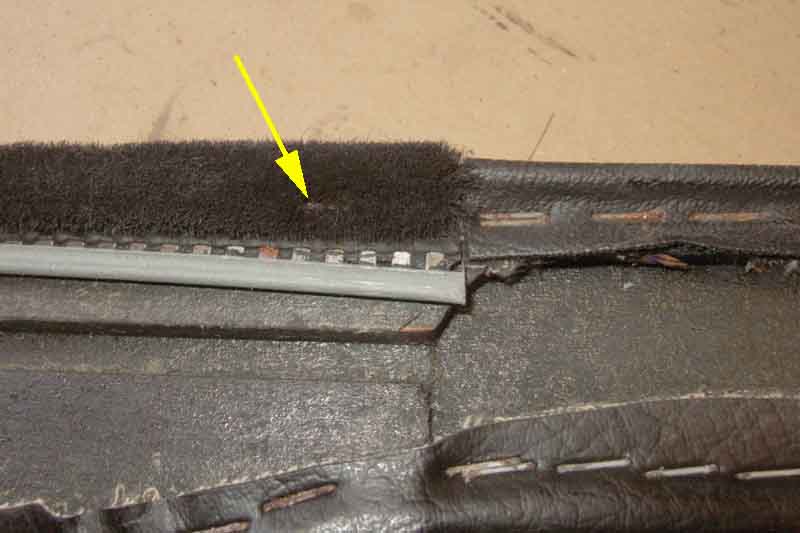
Roadster: 'A' waist rail; 'B' chrome (that's reflection, not rust!) end bracket of waist rail; 'C' furry inner seal (no top metal strip, as replaced over 30 years ago); 'D' external seal riveted to the door:
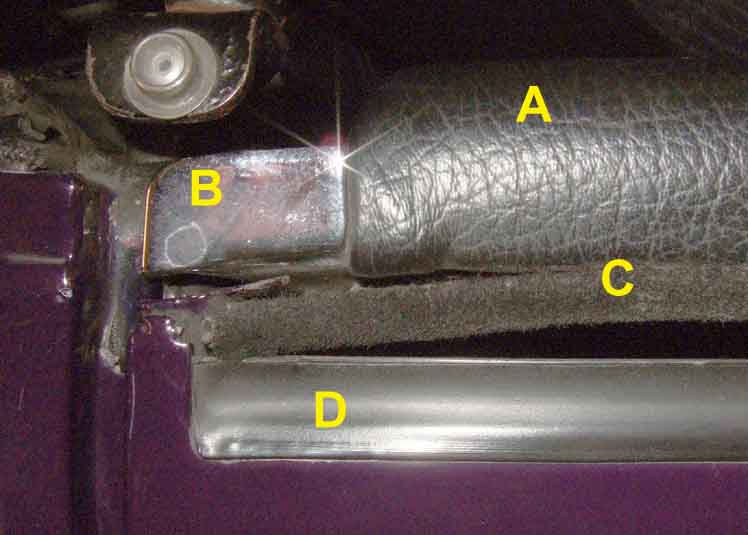
GT: 'A' waist rail; 'B' furry inner seal - original with top metal strip; 'C' external rubber seal clipped to finisher, 'D' finisher riveted to the door:
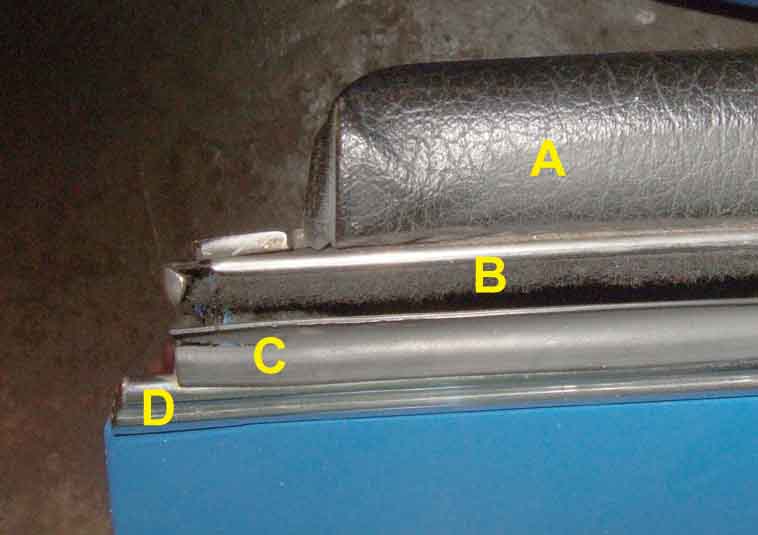
On the roadster the outer rubber 'scraper' seals AHH6348 (RH) and AHH6349 (RH) are pop-riveted to the turned over flange at the top of the outer door skin.
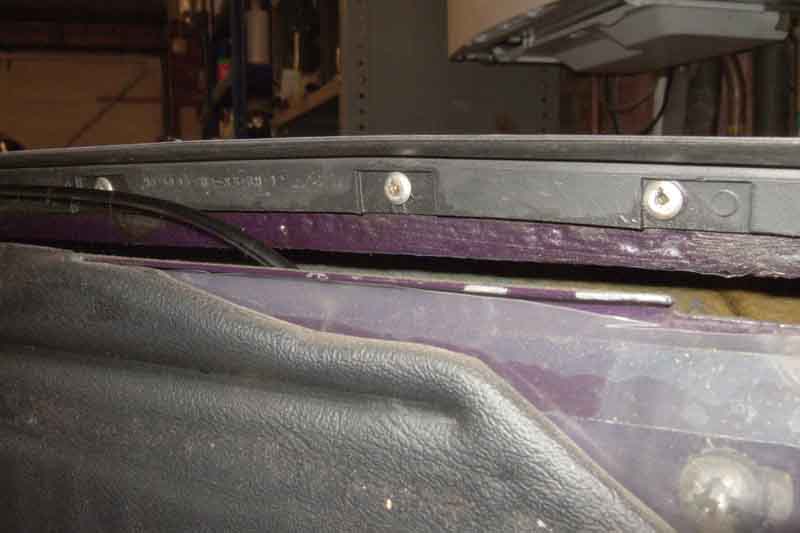
On the GT the same outer rubber 'scraper' seals AHH6348 (RH) and AHH6349 (RH) are attached to the upper part of the bright finisher AHH7476 (RH) and AHH7477 (LH) with clips GHF1560. The finisher goes under the quarter-light and is pop-riveted to the turned over flange at the top of the outer door skin.
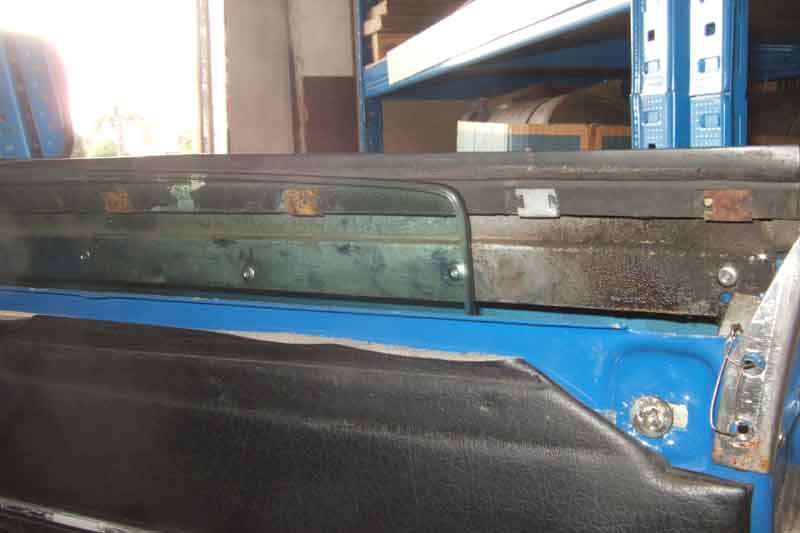
The reason for the GT finisher can be seen in the above picture. The roof-line of the GT is a good inch higher than the roadster, which means the GT drop-glass has to be taller as well (as is the quarter-light). But there is no more space at the bottom of the door for the glass to retract into, so the additional height is left sticking above the top of the door when wound fully down as can be seen by comparing with the roadster. Not a good look, hence the finisher to cover the excess, and that carries the rubber seal.
GT door trim AHH7476/7 which carries the outer rubber seals AHH6348/9, the front part sits under the quarter-light: (Moss Europe)

This section stemmed from a question on the MGOC forum from someone that couldn't see how he was going to attach the GT seals to a replacement door without separating the inner and outer skins! After some backwarding and forwarding I asked for a couple of measurements which would hopefully reveal how much of the turned-over flange on the outer skin is accessible. The first was the distance between the centre of the hole for the rear channel upper bracket fixing screw and the top edge of the inner skin, and the second was the distance between the top edges of the inner and outer skins. Figures for the first measurement came back as 20mm for an existing door and 25mm for the new door i.e. the inner skin seems to be 5mm higher on the new door which would encroach on the access to the said flange. The second came back as 10mm - but on both doors, and that is way less than mine from observation. So I measured mine:
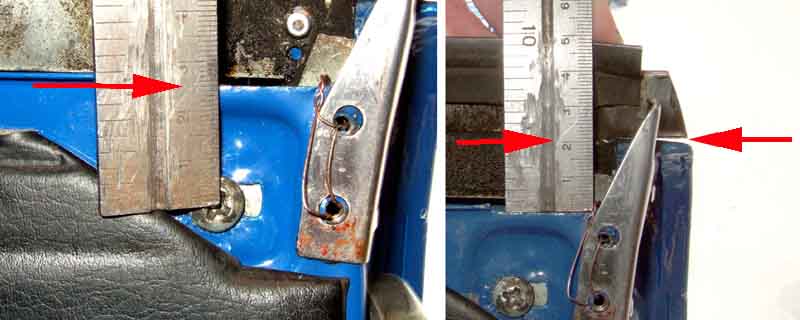
The first is 25mm which is the same as his new door, but the second is 20mm which is double, and explains why I have plenty of room to access the flange on both mine. As to why the posters doors are so different that is another matter, but the doors did change with the Mk2 in Nov 67, at the start of the 72 model year, and at the start of the 77 model year. One solution could be to drill through the inner skin as well as the flange in the outer, and feed the rivet through the hole in the inner skin. That will need a tube on the mandrel of the rivet so that the rivet gun still presses on the head of the rivet, but the mandrel (the pin that the rivet gun grips and pulls) will probably be too short. The answer to that could be to get some long rivets and change the mandrels over (which is basically what I did when substituting long rivets for the very short ones used to fasten the body side strips through the double skin where wing sections had been replaced, fitting the long ones to the cup-washers). But with long rivets the weak point where the mandrel snaps will probably be then outside the rivet instead of inside, which could interfere with the drop-glass, so would need cutting off.
